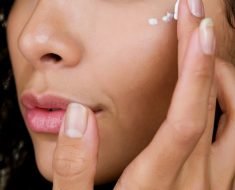To say a lot changed in 2020 is to state the extremely obvious. The coronavirus pandemic made an impact on every imaginable facet of our lives — day-to-day activities, big events, and everything in-between. Like many other professions, facial plastic surgeons were unavoidably affected by not only the pandemic itself but its ripple effect on our lives. And while many once thought that cosmetic procedures would inevitably see a decline during such a medically precarious time, the results of the American Academy of Facial Plastic and Reconstructive Surgery's (AAFPRS) 2020 member survey paint a surprisingly different picture.
According to the survey, 70 percent of AAFPRS member respondents reported an increase in bookings and treatments during 2020, with nine out of 10 facial plastic surgeons claiming an increase of more than 10 percent. Rhinoplasty, face-lifts, eye-lifts, and neck-lifts were the procedures that saw the most notable surge despite COVID-19 — or, in a roundabout way, because of it.
The Zoom Effect and More
The plastic surgeons that Allure spoke to agree that multiple factors went into this increase in demand for facial plastic surgery, one of them being what the AAFPRS is calling the “Zoom effect.”
"With more people working remotely now than ever before, there's no question that there's been an increased use of video conferencing platforms like Zoom and — as a result — an increased amount of time staring at oneself during daily calls," New York City-based board-certified plastic surgeon David Shafer tells Allure. "People are starting to see themselves in a whole new light, and this sense of hyper-awareness and self-scrutiny has caused the rise in popularity for these specific procedures."
Mary Lynn Moran, a board-certified facial plastic surgeon in Nashville, Tennessee, and the immediate past president of the AAFPRS, expands on Shafer's observation: "We don't usually look at our own image for such a sustained period of time from so many angles," she tells Allure. "There is plenty of time to face the reality of how you really look. To make matters worse, the camera angle and lighting can accentuate and distort certain features."
New York City-based board-certified plastic surgeon Adam Kolker says patients' newly increased access to telemedicine platforms may play a role in rising demand, as well, because they are able to connect more easily with plastic surgeons from the comfort of their own homes. "Where once the only option for exploring elective procedures from home was the unfiltered Google rabbit hole, patients are now empowered to connect directly with an expert who is equipped to develop a customized plan based on the individual's goals and desires," he tells Allure. "Whether they have been considering a procedure for years or are just starting to explore the concept of elective surgery, patients are now able to dip a toe in the world of cosmetic procedures in a way that is personalized, realistic, and informed."
A remarkable 96 percent of the AAFPRS members surveyed said that not having to miss work during recovery has served as a significant influence on why people have been getting facial plastic surgery during the pandemic. "There is less hesitation about the post-procedure recovery process now that most patients are working from home and can still work their full-time jobs," Shafer says. "As a result, many patients are coming in for more invasive procedures that they had been putting off for a while, like cheek-lifts, chin augmentations, and facial liposuction."
Paul Carniol, a New Jersey-based board-certified facial plastic surgeon and the current president of the AAFPRS, says working from home not only allows patients to avoid missing work but also affords them more privacy. "[Patients] are mainly working from home and therefore have time to recover at home from their procedure, [so] any post-procedure-related swelling or bruising will not be visible to others," he tells Allure.
That additional privacy is also a welcome byproduct of wearing a mask in public. "Patients have been more willing to pursue plastic surgery procedures, as face masks are helping them camouflage and hide in plain sight," Shafer says, noting that swelling, stitches, needle marks, and bruising can be covered. Masks are even playing a part in which procedures people are electing, he says. "With the use of face masks, our eyes and brow area are highlighted most, making them the focal point and center of attention when talking with other people." Because of this, his practice has noticed a sizable increase in cosmetic eye and brow procedures.
Another major factor: "All of our patients who are working have significantly reduced expenditures," Carniol says.
Moran tells Allure that those who were not significantly affected economically by the pandemic were not spending as much money as usual on things like travel, clothing, and eating out. "For some, the extra discretionary income and available time to avoid being out and about in the public created the perfect opportunity to have elective surgery," she says.
The numbers reflect that the sense of financial or privacy-enabled freedom to pursue plastic surgery was not dampened by concerns of coronavirus exposure. All of the surgeons Allure spoke to chalk this up to their offices and operating environments' stringent safety and hygiene practices, many of which were already in place before the pandemic. "Patients that elected plastic surgery in 2020 were comforted by the fact that medical facilities were already well-versed in functioning in sterile environments, which includes excruciatingly detailed procedures and protocols to keep things germ-free," says AAFPRS member Andrew Jacono, a board-certified facial plastic surgeon in New York City. "So while the world was learning how to adapt to COVID-19 protocols, we were already ahead of the game."
Decrease in Demand for Dermal Filler
Interestingly, while demand for facial plastic surgery procedures increased, the AAFPRS found that the demand for dermal filler decreased for the first time in years. As with the rise in surgical procedures, there are several theories as to why this happened. While Carniol attributes the decrease to the lower half of people's faces being covered by masks in public, Moran believes it's how we see ourselves on camera when we're not masked that may play the most significant role in the shift.
"When you take a 3D image and compress it into a 2D image, facial features become distorted and sometimes exaggerated," Moran tells Allure. "Filler procedures typically augment certain features whereas most surgical procedures tend to be reductive. When you are staring at your face, lips, cheeks, and nose up close on the video camera, you may not be inclined to make them larger."
Jacono sees it as a shift in procedure priorities that may last far beyond the need for daily video calls. "There has been continuously increasing awareness that you can't knock more than four years off your appearance with filler, so discerning patients are seeking more permanent solutions to facial aging, and the pandemic presented an under-the-radar recovery period for surgery," he says.
Ultimately, cosmetic surgery has served as a form of self-care for many who have chosen to pursue it during the pandemic, Moran believes. "This has been a very difficult time for all of us on so many levels. Many of the things we do to make ourselves feel better have been inaccessible," she says. "Under the proper circumstances, undertaking a procedure to enhance your sense of well-being can be very empowering."
Source: Read Full Article





